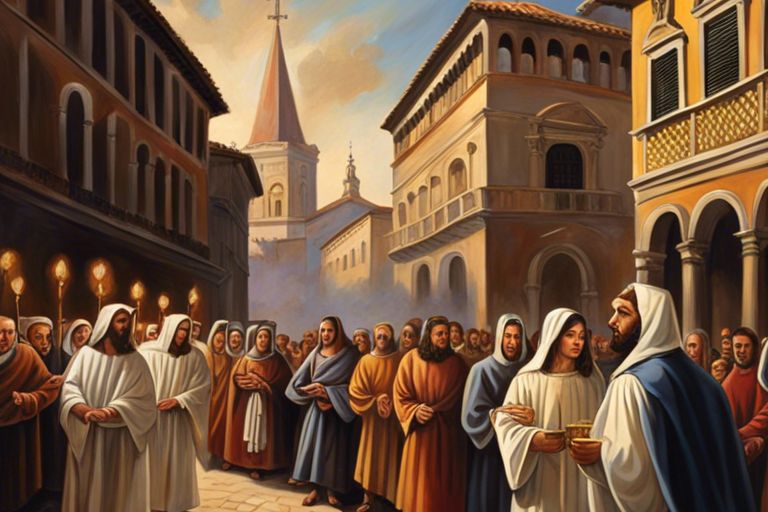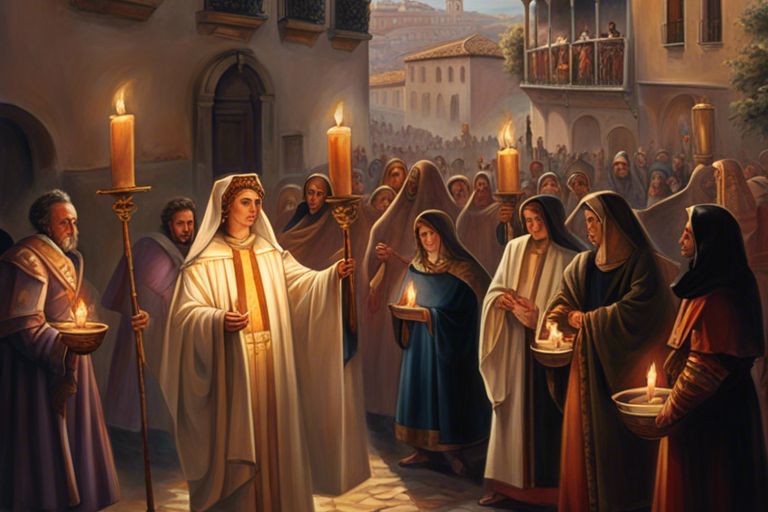It is during Holy Week, or Semana Santa, that Spain comes alive with vibrant processions that showcase a unique blend of religious devotion and cultural heritage. These solemn and elaborate processions date back centuries, combining intricate religious iconography, traditional music, and passionate displays of faith. As part of the country’s rich cultural tapestry, these processions draw crowds of locals and visitors alike, who gather to witness the spectacle and immerse themselves in this deeply rooted tradition. Let’s investigate into the sacred and mesmerizing world of Easter Week processions in Spain.
Historical Background
For a deep understanding of Easter Week processions in Spain, it is crucial to explore the historical background that has shaped this religious and cultural tradition. If you want to learn more about the unique experience of celebrating Easter in Spain, you can check out this insightful article on Celebrating Easter in Spain: A Culture Shock of Sorts.
Origins of Easter Week Celebrations
To grasp the roots of Easter Week celebrations in Spain, we must probe into the early Christian practices that established the foundation for this significant observance. The mix of Catholicism and local traditions has given rise to the unique and deeply rooted processions that characterize Semana Santa in Spain.
Evolution of Processions Over the Centuries
The evolution of processions over the centuries has seen a blending of religious reverence, artistic expression, and community participation. The intricate choreography of the floats, the haunting music, and the elaborate costumes all reflect the evolving cultural and religious significance of the Easter Week processions. The historical context of Spain, from the medieval period to the present day, has influenced the development of these processions, making them a vital part of Spanish cultural identity.
Plus, the incorporation of various elements such as Roman traditions, Moorish influences, and Baroque aesthetics has added layers of complexity and richness to the Semana Santa processions, making them a vibrant and captivating spectacle for both locals and visitors alike.

Religious Aspects of the Processions
Symbolism and Rituals
It is during Easter Week processions in Spain that the streets come alive with a unique blend of religious fervor and cultural tradition. Each element of the procession carries profound symbolism and is steeped in rich ritualistic significance. The figures of Christ, the Virgin Mary, and the various saints are paraded through the streets, accompanied by incense, candles, and the haunting sounds of solemn music.
Role of Brotherhoods and Confraternities
For centuries, the backbone of these elaborate processions has been the Brotherhoods and Confraternities, religious organizations dedicated to the upkeep of tradition and the organization of the events. These groups not only plan and execute the processions but also play a vital role in providing support to the community and preserving the cultural heritage associated with the events. Their members, dressed in traditional robes, march alongside the floats and sculptures, carrying symbols of their devotion.
Apart from the logistical aspects, Brotherhoods and Confraternities also serve as a source of social cohesion and solidarity within the communities they represent. They often engage in charitable activities, including providing aid to the less fortunate and organizing religious events throughout the year, further cementing their role as pillars of the community.
Cultural Impact
Influence on Art and Music
Once again, the Easter Week processions in Spain have had a significant influence on the country’s art and music scene. The elaborate floats, intricate costumes, and solemn music that accompany the processions have inspired many artists and composers throughout history.
Economic and Tourism Aspects
Any exploration of the cultural impact of Easter Week processions in Spain would be incomplete without addressing their economic and tourism aspects. These processions attract visitors from all over the world, contributing significantly to the local economy and tourism industry.
Economically, the processions create opportunities for local businesses to cater to the influx of tourists, from hotels and restaurants to souvenir shops and transportation services. The increased tourism during Easter Week stimulates the economy and supports jobs in the hospitality and service sectors.
Regional Variations
Many regions in Spain have their own unique way of celebrating Easter Week, making it a fascinating display of cultural diversity. To learn more about the various traditions in different Spanish cities, you can visit Easter in Spain – Semana Santa Holy Week Traditions.
Notable Processions in Different Spanish Cities
Regional variations in Spain’s Easter Week processions can be seen in different Spanish cities, each with its own notable displays of religious fervor and cultural heritage.
Unique Local Traditions
Regional variations in Spain’s Easter celebrations include unique local traditions that have been passed down through generations, adding richness to the cultural tapestry of the country.
For instance, in Seville, the processions are known for their elaborate floats carrying religious icons, while in Valladolid, the atmosphere is more somber with silent processions through the streets.
Contemporary Perspectives
Modern Challenges and Innovations
The Easter Week processions in Spain have faced modern challenges and have adapted through innovative approaches. The procession routes sometimes have to navigate through busy city streets, leading to logistical challenges in maintaining the solemnity of the event. In response, organizers have utilized technology to coordinate participants and ensure a smooth flow of the procession.
Processions as Intangible Cultural Heritage
One of the most significant aspects of the Easter Week processions in Spain is their recognition as intangible cultural heritage by UNESCO. This acknowledgment highlights the importance of these traditions in the cultural identity of Spain and the need to preserve and promote them for future generations. The processions serve as a unique combination of religious devotion, artistic expression, and community participation.
Additional information about Processions as Intangible Cultural Heritage: The UNESCO designation not only protects the traditions themselves but also emphasizes the significance of the skills, knowledge, and rituals involved in organizing and participating in the processions. This recognition supports efforts to safeguard the intangible cultural heritage of Spain and ensure its continuation for years to come.
Summing up
Drawing together religious fervor and cultural heritage, Easter Week processions in Spain symbolize a unique blend of faith and tradition that captivates both participants and spectators. The elaborate displays of religious imagery, the rhythmic sounds of marching bands, and the solemn atmosphere create a powerful experience that has been passed down through generations. As a deeply ingrained part of Spanish identity, these processions continue to remind us of the country’s rich history and enduring devotion to its religious beliefs. The combination of centuries-old rituals with modern-day celebrations serves as a testament to the resilience and significance of this cultural tradition in Spain.









